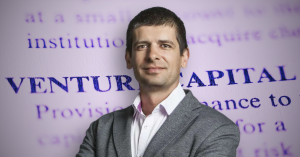Marius Istrate, a visionary angel investor, has been a transformative force in the tech industry. As the former Chief People Officer at UiPath, Marius played a pivotal role in scaling the organization from a nimble team of 100 to a global force of 3,000 within three years. Prior to that, as CEO of SkillValue, he spearheaded innovations in IT assessment and recruitment. With roots in software engineering and telecom, his multifaceted expertise has made him a cornerstone of TechAngels Romania, where he currently serves as Chairman of the Board.
Today, we talk to Marius about Employee Stock Option Plans (ESOPs) and how you can use this tool to attract and retain the right talent to help your company grow.
Drawing on your extensive background, including your time at UiPath where you oversaw massive growth, why would you recommend that founders integrate an ESOP into their business strategy?
With UiPath, I would like to share the fact that having employee stock options and an Employee Stock Option Plan was part of the DNA of the organization. Before I joined UiPath even, the founders already had this idea that they wanted the employees to be part of the growth of the company, to benefit from it, and to be fully part of the story, not just as employees. So, people who are part of defining the trajectory.
It is about people having skin in the game. This is, I believe, the power of an Employee Stock Option Plan. This is how ESOPs were initially designed when they first appeared in the 60s and 70s in the United States and Silicon Valley and that power remains.
It is about people having skin in the game. This is, I believe, the power of an Employee Stock Option Plan.
Essentially, employees have the option of becoming shareholders in the company and thus participate in the shareholder value that is created and that’s a very powerful thing because it changes the dynamic of the relationship between founders, employees and investors. Everyone has skin in the game.
What cultural shifts have you observed as a result of implementing an ESOP, both within the company and in the wider ecosystem?
It’s still slow. Normally, it should produce an understanding and a cultural shift within an organization, but in my experience, it takes a lot of communication and some level of education for people to understand the actual benefit of the Employee Stock Option Plan.
My recommendation to founders and founding teams who decide to do this is don’t just do it and throw it out there but communicate the plan. Communicate about your intentions and about how this is weaved into the culture of your company, why you believe this is important for the evolution of your company. And you must repeat those messages a few times.
My recommendation to founders and founding teams who decide to do an ESOP is: Don’t just do it and throw it out there, […] communicate why you believe this is important for the evolution of your company.
Unfortunately, we haven’t had that many companies who used this vehicle over the course of the last 20-25 years since we started having more and more tech companies in Europe. So there’s still some work to do in Europe, whereas in the United States, it’s assumed that you would receive a stock option package if you join a startup or a growing company and oftentimes even public companies. They need to have a reserved pool for that. Whereas in Europe it hasn’t been such a common instrument. So, there’s still work to do around educating the participating workforce, the ones who are part of the plan.
Founders have a clear intention of why they want to do an ESOP. It’s not identical for all companies, but it fits into the culture of the organization so it’s important to explain why you are doing it. If you need to over-communicate on one thing, communicate why you are doing it.
Then, of course, there are secondary aspects of the ESOP: what does it look like, what are the terms of such a stock option plan – explain vesting, cliff, what a liquidation event or what an exit is, why stock options are important in the context of any liquidation event or exit or secondary vent. These are things to explain afterwards but start with the why.
How do you perceive the impact of ESOPs on attracting, motivating and retaining critical talent?
What I’m witnessing most happening currently is that they have an important effect in terms of retention of talent, meaning that once people realize the value of it and the importance of being a shareholder in the company, there’s a propensity for them to continue to contribute and to help the organization and navigate tough times.
I don’t believe in Europe we’re doing such an excellent job at explaining the importance of an ESOP when we are talking about attracting talent. I think a lot of people don’t yet understand the full value of it. It’s also difficult sometimes to understand because even when we do implement an ESOP, when we talk to top talent that we want to hire, we tend to talk in percentages instead of value, which can be very confusing for someone who is looking to join your organization.
A lot of people don’t yet understand the full value of an ESOP. It’s also difficult sometimes to understand because we tend to talk in percentages instead of values, which can be very confusing.
So, I think we’re not there yet in terms of leveraging ESOP to its full potential in terms of attracting talent. But gradually we’re going to get there once we have more and more success stories in Europe about joiner #5 or #10 or joiner #100 in a growing technology startup that talks about their exit, or what happened upon a liquidation event. This takes time and it will have an impact on the employer branding activity also.
The flip side of that is that in the US, it’s less important to retain talent because people know that they’re getting stock options in whatever technology startup or startup in general. And they have a higher mobility of the workforce for this reason. They also have a clearer understanding of what can happen to the stock you have opted to buy. After a liquidation event, they know that that stock can go up, or down; there are a series of market factors that influence this. So, it’s interesting because in the US it’s doing less in terms of retention, you actually have to pump a lot more into that stock option pool to have some level of effect on retention, but it’s widespread. It’s almost everywhere in terms of talent attraction.
When would you say is the ideal stage to establish an ESOP in a startup’s growth trajectory?
I’m going to respond in a counterintuitive way. The right time to implement it is shortly after you’ve announced it! And here’s why I’m saying this. A lot of founders have this good intention. They talk about stock options. They talk about distributing the value that is being created to all those participating in the growth of the company. They talk about it, but they don’t implement it and they actually get a negative effect when they don’t follow up on what they’ve promised.
The right time to implement an ESOP is shortly after you’ve announced it!
And the reason why they don’t do it is that typically it’s easier to do when you’re going through a bulk of legal work, and this tends to happen around a series of financing, around an event that somewhat restructures your cap table. There’s some work already being done, so it’s the right time to decide on the size of the employee stock option pool and maybe start allocating and so on.
But oftentimes founders start talking about wanting to do an ESOP long before there’s some work on the cap table in sight and this can create frustration for some people, because you’re hearing this and an expectation is created, and you want the founders to follow up on that expectation.
So, to repeat, the best time to start is right after you’ve announced it. Now when do you announce it? How do you time that announcement? How do you time the implementation of such a project? When you already have some work that you need to do.
If you’re getting some mature, institutional investors that are joining a round of financing in your company, they will want to know what you plan to do around the Employee Stock Option Plan. So, expect to do it then.
If you’re getting mature, institutional investors that are joining a round of financing in your company will want to know what you do around ESOP.
There are a lot of traditional companies that are not technology startups that also implement employee stock option plans. So anytime is the time to do it but try to correlate it with some work that’s happening around your shareholder structure so that you have less paperwork involved.
But leaving the paperwork aside, all flavors work. There’s no ideal time. You can do it from the start of the company. You can do it after you have a few people joining. Founders can think about this at any stage of the company. It’s never too late to do it. Think about what you want to achieve with it and then go talk to people who can help you implement an ESOP and just do it.
What are the most significant challenges in managing ESOPs, and what strategies might startups employ to overcome them?
The main strategy is around designing and then managing an ESOP. The main difficulty for a lot of founders is that they don’t know where to start. They don’t know what good or great looks like. They don’t know what other companies are doing. My suggestion here is just benchmark. Look at what other companies in the same field of activity, that are maybe the same age or size as your company are doing.
I get this question often from people who are trying to design an ESOP: “How much is too much in terms of stock options that I’m allocating into the pool?”. That’s a very difficult question for founders doing this for the first time.
The second aspect that they need to tackle is who gets it. There isn’t a single flavor here. You can have a spread across your entire workforce, but you can also have key employees that are incentivized or maybe just executives that are incentivized. There isn’t a single right answer here, all flavors are valid. It depends on the outcome you expect and the kind of behavior you want to encourage within the organization.
The third challenge that founders should be aware of is that they communicate about doing this way too early and they create a sort of disappointment within the organization by not following up and they create the impression that they’re not seriously thinking about this. So going back to what I said earlier, when you start announcing it because you feel it’s important and the organization needs it, follow up on the implementation shortly after and use cap table management platforms to start the actual work.
The last thing that founders need to keep in mind is that as time goes by, you have to look at the net consumption of stock options from that pool that you’ve designed. Some people will stick around with the organization for a long time and become fully vested. Maybe they’re going to need a refresh at some point in time if you really want to keep them. Some people will not stay within the organization, so some of those stock options will return into the pool, if not exercised, or if not enough if time has passed. So not a complicated aspect, but an important one: keep an eye on the size of the pool and be ready to adjust when necessary.
Could you share any success stories where ESOPs have significantly contributed to a company’s or individual’s success?
We have some success stories that we can look at – except for UiPath which is our own flag bearer, because it’s a Romanian company. But you have other European companies who have gone public, especially in the US, on NASDAQ. Datadog is a French company that has done so successfully, and it had a stock option plan.
There are several other publicly traded companies that started in Europe. Some of them got listed on the local European stock exchanges like the London LSE, or Euronext Paris. These are companies that are liquid, where people who had stock options and exercised them became shareholders and could then trade their shares on those respective stock exchanges.
But there are other interesting examples where liquidity is created. You know, companies in Europe that have been acquired where holders of stock options were able to touch on some liquidity upon that event and even secondaries.
Sometimes what will happen in the process of bringing a new investor on board is that they will take a look at the structure of the cap table and in order not to further dilute the founding team, or maybe with the purpose of letting the founding team and some key personnel touch on some liquidity, they can decide to organize some secondary for a part of the transaction. The information on secondaries is not publicly available and it’s typically not nearly as consistent as a full liquidity event, but it can be a first step into showing your workforce what the value of the stock options is.
These are three things that you can look at: the first one is just public markets and the last two are happening in the private realm.
Feel free to connect with Marius on LinkedIn.
Read the ESOP distribution views and advice of another 11 of CEE’s top founders and investors.







